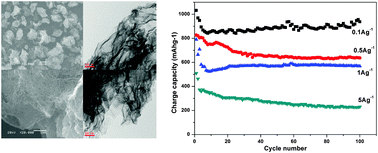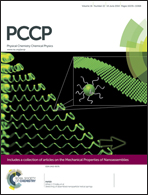In situ fabrication of graphene–carbon nanochain webs as anodes for Li-ion batteries†
Abstract
Carbon nanochain webs-sandwiched graphene has been successfully fabricated via in situ polymerization and subsequent carbonization. Such a novel nano–micro structure not only provides high conductivity, but also improves the cycling stability and rate capability during Li-ion storage. It shows a charge capacity of 1103.2 mA h g−1 at 0.05 A g−1 after 50 cycles.


 Please wait while we load your content...
Please wait while we load your content...